Jan 26 2017.
views 691The Wild: a walk through adventure in the wilderness
A unique exhibition drawing attention to the conservation of Sri Lanka's dwindling wildlife population
Today, photography has become one of the most sought after professions and pastimes in the world, besides being one of the most effective, impactful modes of communication. With the popularity of social media and citizen journalism skyrocketing, more and more people seem to be delving into a subject as vast and deep as the ocean itself. The recently concluded wildlife photography exhibition titled ‘The Wild’ held at the Lionel Wendt on the 21st and 22nd of this month, was not only fascinating and awe-inspiring, but was also thought provoking.
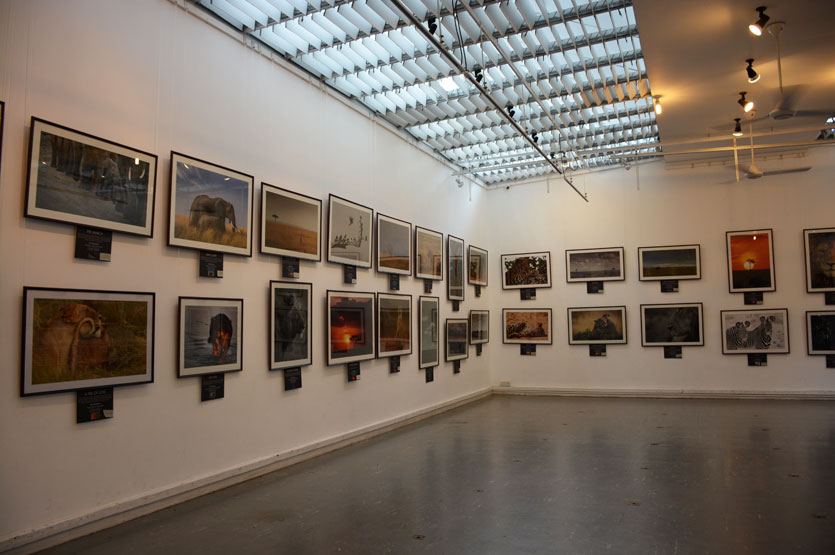
Part of the exhibits
Presented by two highly talented photographers - Amrit Rajaratnam and Shanik de Silva - the exhibition featured some of the most dramatic and impressive captures of the wild covering not only Sri Lankan national parks and nature reserves but also some of the most popular safari destinations in the African continent. The exhibition featured scores of breathtaking photographs of big cats capturing family moments, including lions, leopards and cheetahs in addition to wild elephants, hippos, rhinos, zebras, wildebeests and meerkats as well as a variety of birds.
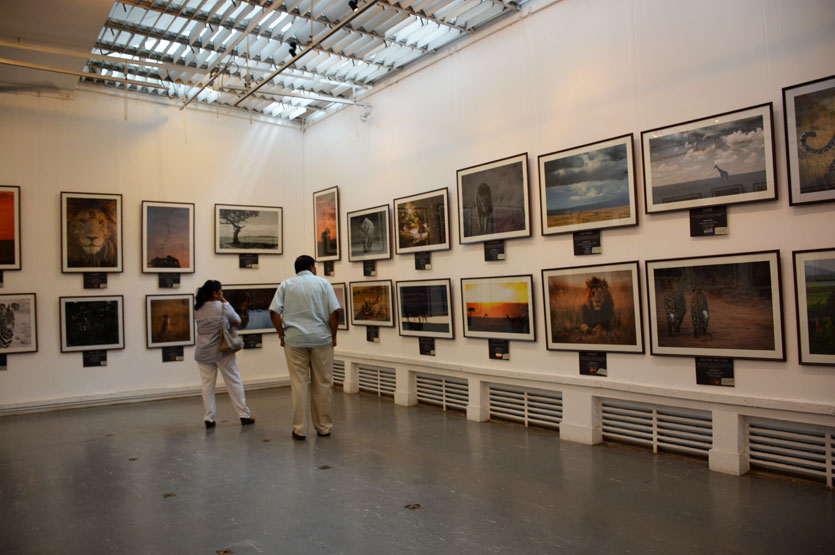
Two visitors admiring the exhibits
By profession Amrit Rajaratnam and Shanik de Silva both serve as Managing Directors in their respective companies pertaining to hospitality industry and mineral water industry respectively. When enquired about their roots in photography, both Amrit and Shanik mentioned that they started out as young explorers traveling to the wilderness with their families as kids, and later with their friends.
The regular travels to the national parks and nature reserves across the island generated the urge to record the moments they witness. Hence photography became the secondary pastime for the past 15 plus years, backing their prime passion for exploring the wild. Moreover, the two have been close family friends, and this made them to continued their travels to the wildnerss together for decades.

Amrit Rajaratnam (right) speaking to a foreign visitor
While expressing his views on the national parks of Sri Lanka, Amrit Rajaratnam said, "We started taking photographs in Sri Lanka before visiting anywhere overseas. But it's not very easy to take photographs in Sri Lanka anymore, as the places get too crowded." He further said that in the past they used to visit local national parks once a month. However, they stopped visiting the local sites as they encountered more safari jeeps than wild animals. Amrit also said that his father gave him the very first camera, which was a basic camera, and that he learnt photography on his own through constant practice and experience.
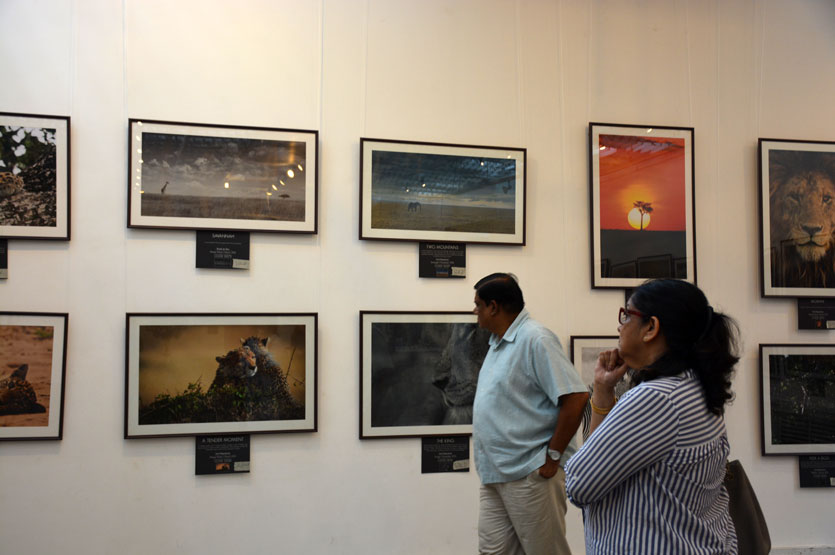
The previous two visitors with different exhibits
Elaborating on the places they visited, Amrit further added that they have covered Yala, Wilpattu, Lunugamwehera, Sigiriya, Kawudulla, Minneriya, Kumana, Sinharaja among other well known and lesser known nature parks and reserves. In addition, during their overseas exploration, the two have visited India, Kenya, Tanzania, Zambia and South Africa.
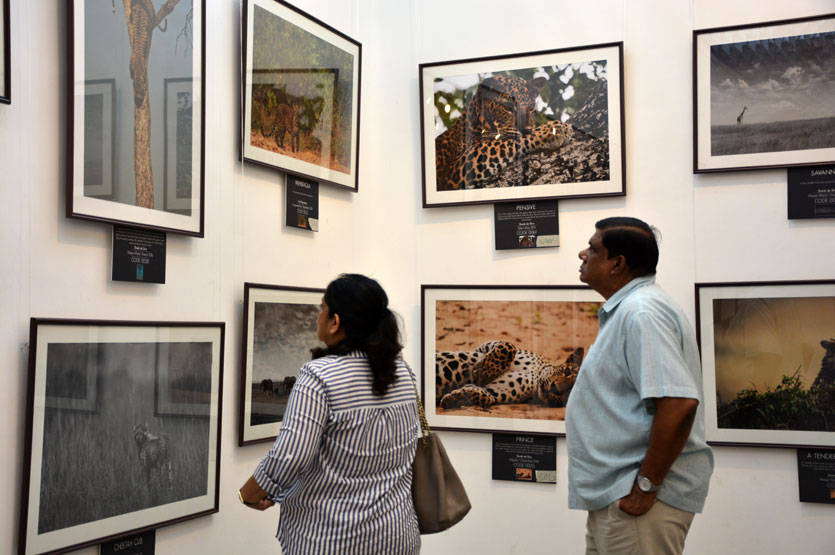
Same visitors with a different set of exhibits
When enquired about the enthusiasm in photography in Sri Lanka, Amrit said, "There has been a really good response in Sri Lanka for photography. I think wildlife photography there is a lot of interest. The other day we had scout groups coming and they seem very very interested. And I think it's most important that a beginner study by themselves and take a lot of pictures. Practice is all you need to learn photography."
Tracing his roots in wildlife photography, Shanik de Silva said that he initially started shooting with a film camera, however, he was not pleased with the outcome as the photos did not turn out as he expected. And he stated that he began to improve his skills after switching over to the use of digital cameras.
Shanik also stressed that practicing photography is a means of learning about life. "Photography is all about judging the life, and you are in the light to get what you want. I've been doing wildlife photography for the last 15 years and one thing I can positively say is that I actually know nothing about it," he said. Shanik also mentioned that at the outset he took few lessons on photography to learn the fundamentals. However, he developed his skills through sheer practice and persistence in engaging in the subject. He also stressed on the importance of framing and lighting a photograph properly, which he added is much harder to grasp than the fundamentals of the subject.
Speaking about the conflict of opinions when it comes to the Sri Lankan context of wildlife conservation, Shanik said, "Sri Lanka is teeming with wildneress that we are taking for granted. You need to look at this issue from a point of view inclusive of conservation and sustainable development. Because it's very easy for someone sitting in Colombo to say 'You know what? Leave our jungles alone!'
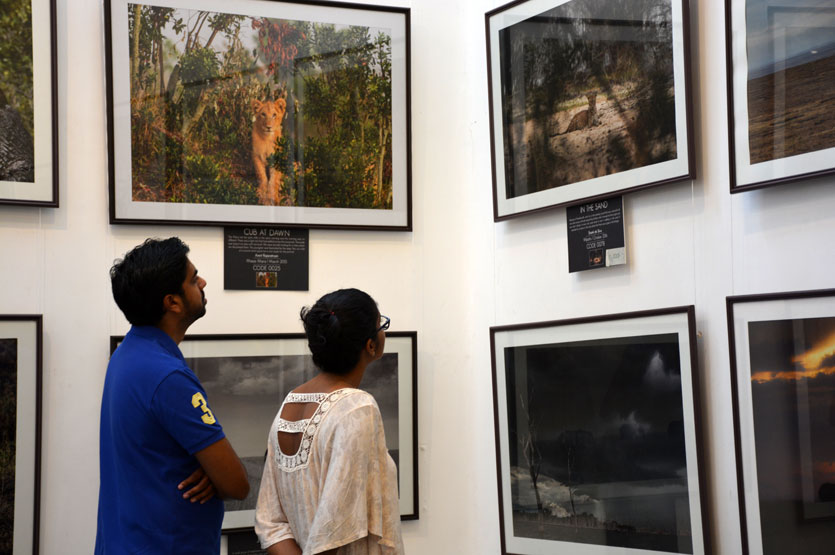
Young visitors at the exhibition
He further elaborated that people who dwell in remote areas base their income on agrarian culture. And when wild elephants invade into their territories and destroy crops, the consequences will be detrimental. He emphasized that only being concerned about the elephants and disregarding the needs of these people will not resolve the long standing human-elephant conflict.
Speaking on the importance of drafting plans to resolve the matter, Shanik said, "Nothing makes me happier than being in the jungle and hearing animal sounds. But we need to look at it from the perspective of people who get affected by that, because they have to be the protector of the jungle. I think the government and everyone else need to look at it from a macro scale. And this can only change if the people in those areas start drawing their income from the nature reserves."
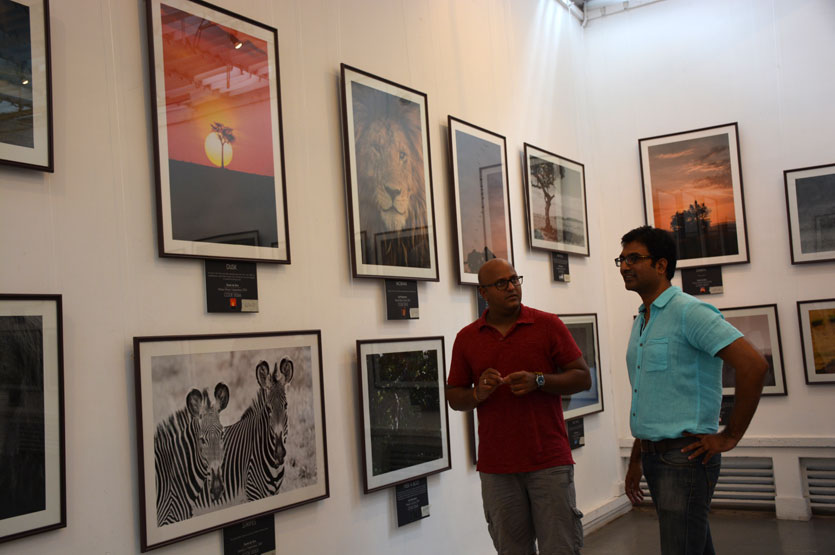
Amrit Rajaratnam (left) and Shanik de Silva (right)
Shanik also mentioned that it was their maiden photography exhibition and that the featured photos were captured using Canon 7D Mark II with a 100mm - 400mm zoom lens and 400mm prime lens. All the pictures were handheld shots and taken under the natural light with no flash or artificial lighting. He also said that it's hard to say there is a particular gear or brand ideal for wildlife photography as it's all up to individual taste and experience.
Sharing his views on camping out in the wilderness Shanik added that it's a one of a kind experience that a photography enthusiast and everyone else should not miss. "It's not a question of affordabilitly, it's a question of interest. And it's a question of people respecting wildlife from the inside, while looking at the means of conservation from the outside."
TEXT and PHOTOGRAPHS by Ganga Ratnayake
0 Comments